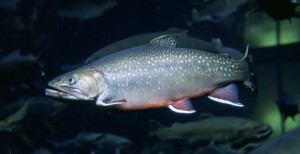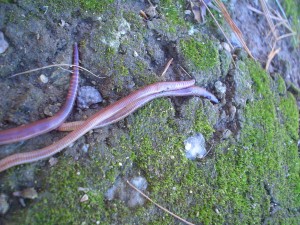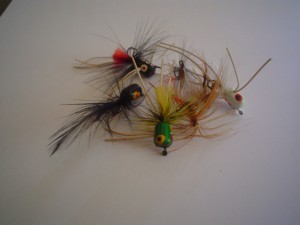Have you ever seen an oil painting or photo of the woods of new hampshire with a beatiful slow moving clear blue river running through it. The kind of tranquel river that is calming to the soul and helps you to forget about all the anxieties of your life. The sound of the slow moving crystal clear water completely calming your inner spirit. If you have seen such a river either on telivision or in person then you may know that brook trout are also common in these types of streams. They are known to inhabit slow moving cool running streams with good clarity. Below I have detailed some more information about how to catch one of americas oldest native trout species.
Brook Trout Fishing Facts

Brook trout are sometimes refered to as speckled trout as they have speckles of red and blue dots along thier brown bodies. Thier bottoms are more reddish in color. These dots make them both easy to indentify and appealing to the eye.
They do not grow much larger than 15lbs in wieght and do not span much larger than 3 feet long. This makes them not one of the largest species that inhabit these waters, but a decent size fish none the less.
They reley on a decent amount of light to spot thier prey, so the best time to fish for brook trout is durring the early evening or early dawn. Many scientists beleive that the spawning of insects happens around these times as well, so thier is much feeding happening durring these times.
They have a fair sense of smell as well as a fair sense of vision. Like many other species of freshwater and saltwater fish they also rely on the lateral line system to indentify thier next meal. They can use this system to identify vibrations in the nearby water.
Brook trout have been known to jump up rivers and streams, but probably do not put on such a display as a salmon would.
Many anglers have success catching “brookies” with dry or wet flies using Fly Casting techniques.
How to catch Brook Trout

Brook trout natural feed on small insects, crawfish, amphibians and leeches as well as any other abundant food source at the time. Thier are a variety of techniques used to catch brook trout.
What is the best bait for Brook Trout Fishing

I generally fish with smaller shiners, lures that resemble grasshoppers or crickets, worms and trout eggs when
fishing for brookies. A variety of baits will work effectively, but it is important to study the surrounding food supply in the water. I try to match my bait to what is abundant at the time.
Where to catch Brook Trout
Thanks to stocking of rivers and ponds, brook trout can be caught in almost any part of america. Thier natural habitat was originally the northeast and the great lakes region. Any slow moving clear body of water is a potential candidate for brook trout. They spawn in october through decemeber and the female nests can be spotted from shore.
- Connecticut River
- Hudson River
- Lake Winnipesaukee
- Sebago Lake
- Lake Champlain
- Rivers around Lake Ontario
- Rivers around Lake Huron
- Oahe River
- Rhode Island Rivers and Lakes
- Massachussetts Rivers and Lakes
When is the best time to catch Brook Trout
As stated above the early morning or early evening are great times to catch brook trout. While river fishing I find that the bite generally stays good for most of the day however. Any overcast day or full moon offers sufficeint light for the brook trout to spot thier prey while keeping the feeding time open.
Brook Trout Fishing Tips
I have found that fly fishing works the best for catching brook trout, but I have caught them using different methods as well. A large dry fly on a slow moving river can be very effective, just be certain not to make a lot of noise as they can easily be spooked down stream. Drifting a nightcrawler downstream can also produce good results. When fishing for brookies I have attendacy to use smaller tackle as I know they do not grow quite as large as Salmon or some other species of trout. If you are a beginner fisherman the odds of you catching any species of fish is great when using smaller tackle anyway so it may not be a bad practice if you are just starting out.

